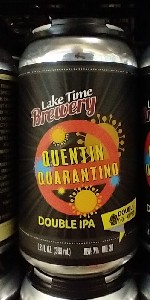

Bees Saal Baad’s huge success meant that Nag used the same crew for Kohraa. Both the films provided him with experience not only in creating atmospheric sets, but also framing within them his choice of female lead, Waheeda Rehman. Previously, Nag had worked as an art director with Guru Dutt in films like Chaudhvin Ka Chand (1960) and Sahib Bibi Aur Ghulam (1962). Kohraa was Nag’s second film as a director he had already released the widely acclaimed Bees Saal Baad (1962), which many saw as a genre-defining moment in the history of Indian horror cinema. Biren Nag adroitly demonstrates this with Kohraa, made two decades after the original Rebecca, based on Daphne du Maurier’s eponymous novel. With their focus on the destructive force of desire, the power dynamic that underlies them, double roles and doppelgangers, the obsessive pursuit of a lover, and the masala that defines a good suspense thriller, the bare bones of a Hitchcock film settle comfortably into the flesh and blood of a ‘typical’ Indian melodrama.

The answer is as deceptively simple as the plots of most of these films. With their focus on the destructive force of desire, the power dynamic that underlies them, double roles and doppelgangers, the obsessive pursuit of a lover, and the masala that defines a good suspense thriller, the bare bones of a Hitchcock film settle comfortably into the flesh and blood of a ‘typical’ Indian melodrama What is it, then, that makes Hitchcock so adaptable to the templates of Indian cinema? Two decades later, Vidhu Vinod Chopra paid cinematic tribute to Psycho (1960), intercutting shots from the film’s iconic shower scene playing on the television with audio of a character’s murder in the shower in Khamosh (1985). Hitchcock left his traces markedly in Raj Khosla’s work in the 1960s, with Woh Kaun Thi? (1964), Mera Saaya (1966) and Anita (1967)-haunting music, foggy landscapes, femme fatales, and claustrophobic close-up shots of Sadhana in these films closely followed what an international audience would have recognized as trademark Hitchcock fare. A few notable examples include Biren Nag’s adaptation of Rebecca (1940) with Kohraa (1964), The 39 Steps (1935) made into Basu Chatterjee’s Chakravyuha (1978), Vijay Anand’s Jewel Thief (1967), inspired by the universe that To Catch a Thief (1955) operated within and the Sanjay Dutt- Meenakshi Seshadri starrer Inaam Dus Hazaar ( Jyotin Goel, 1987), a fun-filled take on North By Northwest (1959).

With films like Saavi (Karthik Raghunath, 1985) in Tamil, Hitchcock easily transitioned from a mainstay in Hindi-language films to other genres and languages as well. With their clever mix of murder, suspense and romance themes, Hitchcock’s films have been smoothly adapted in a number of Indian films. Hollywood directors like Quentin Tarantino, Roman Polanski and Francis Ford Coppola have often made appearances in Indian cinema-with films like Kaante (Sanjay Gupta, 2002), Manorama Six Feet Under (Navdeep Singh, 2007) and Sarkar (Ram Gopal Verma, 2005) respectively-but the one popular filmmaker from Hollywood with a sustained influence on Indian cinema, from the 1960s onwards, has been Alfred Hitchcock.


 0 kommentar(er)
0 kommentar(er)
